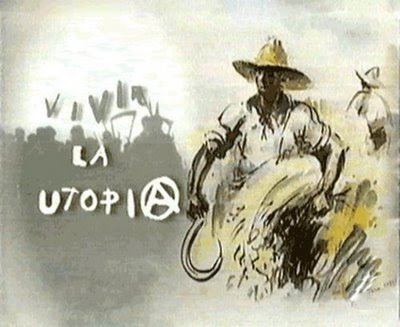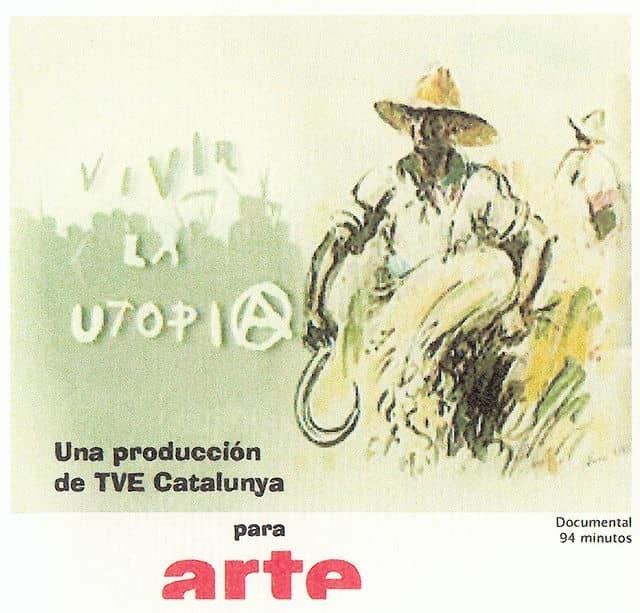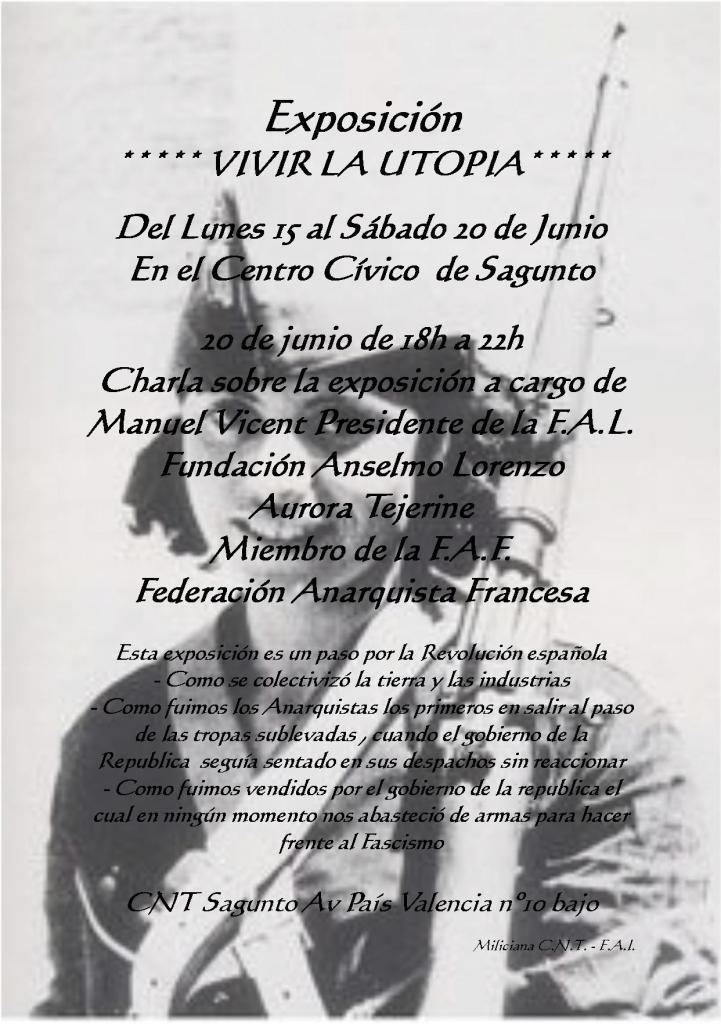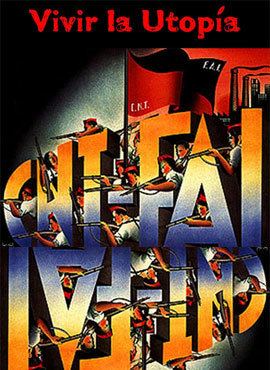Vivir la utopía
8.2 /10 1 Votes
| 8/10 IMDb | |||||||||||||||||||||||||||||||||
 | ||||||||||||||||||||||||||||||||||
Documental vivir la utop a
Living Utopia (Original, 1997: Vivir la utopía. El anarquismo en España) is a documentary film by Juan Gamero. It consists of 30 interviews with surviving activists of the 1936–1939 Spanish Revolution, which are combined with visual materials such as manifestos, photographs, excerpts from film footage, portraits and flamenco music by El Cabrero and Paco del Gastor. The testimony of the anarcho-syndicalists and anarchist militants from the CNT-FAI revealing the constructive work of anarchists in Spain, as well as the amazing educational and cultural activities which lead up to 1936. This workers' self-management meant, as Gaston Leval comments in The Anarchist Collectives, Sam Dolgoff (ed.):

The city's 3,000 workplaces collectivised and 150,000 join the anarchist militias to fight fascism. The movement of the Mujeres Libres followed the idea of a "double struggle" for social revolution and women's liberation.

Interviewed anarcho-syndicalists/anarchist militants include: Miguel Alba, Ramon Álvarez, Federico Arcos, Marcelino Bailo, Maria Batet, Severio Campos, Francisco Carrasquer, Miguel Celma, Valerio Chiné; José Espana, Jose Fortea, Juan Giménez, Antonio Lahuerta, Concha Liano, Fidel Miró, Aurora Molina, Heleno Molina, Conxa Pérez, Suceso Portales, Dolores Prat, Ximo Queirol, Maravilla Rodríguez, Juan Romero, Manuel Sanz, Liberto Sarrau, José Sauces, José Serra Estruch, Antonio Turón, José Urzáiz and Antonio Zapata.


